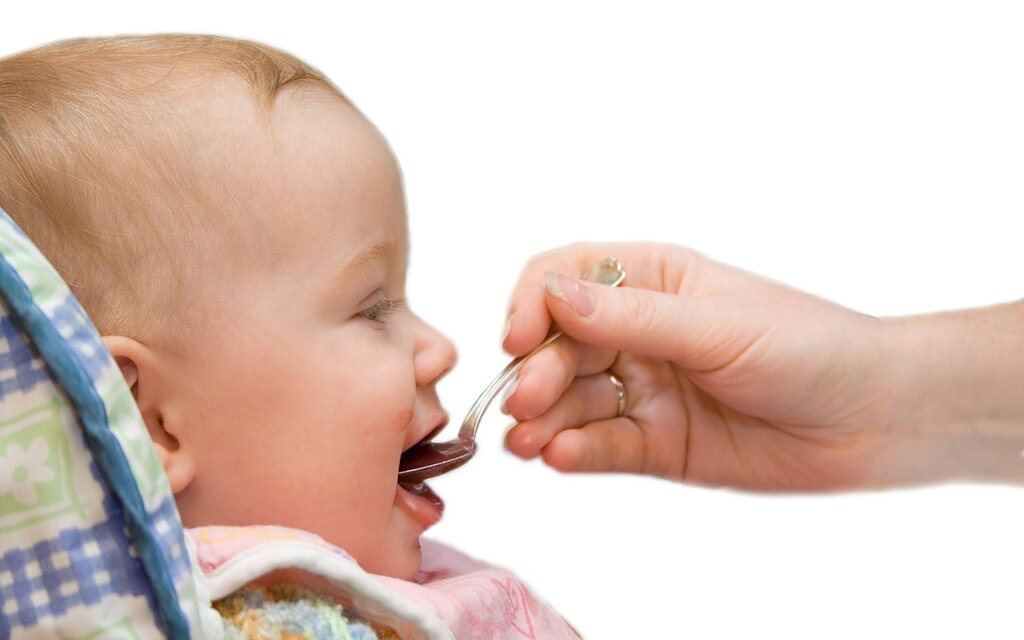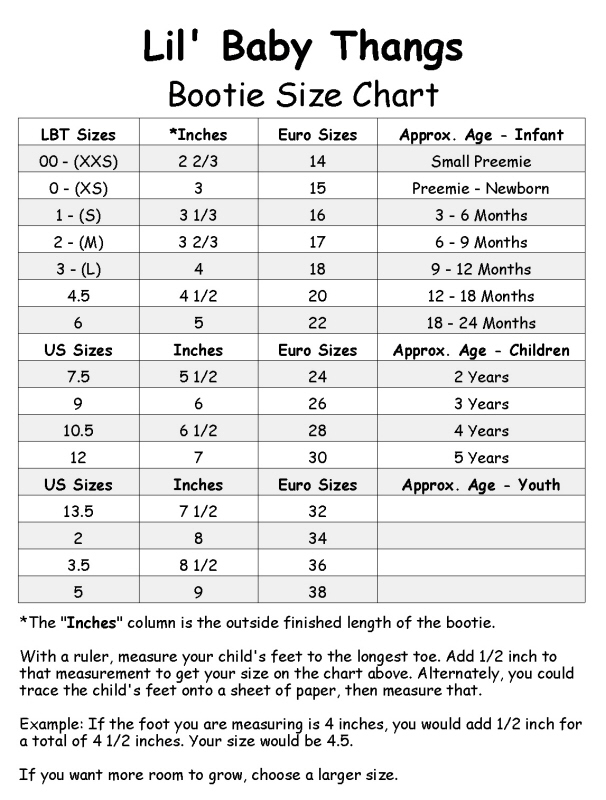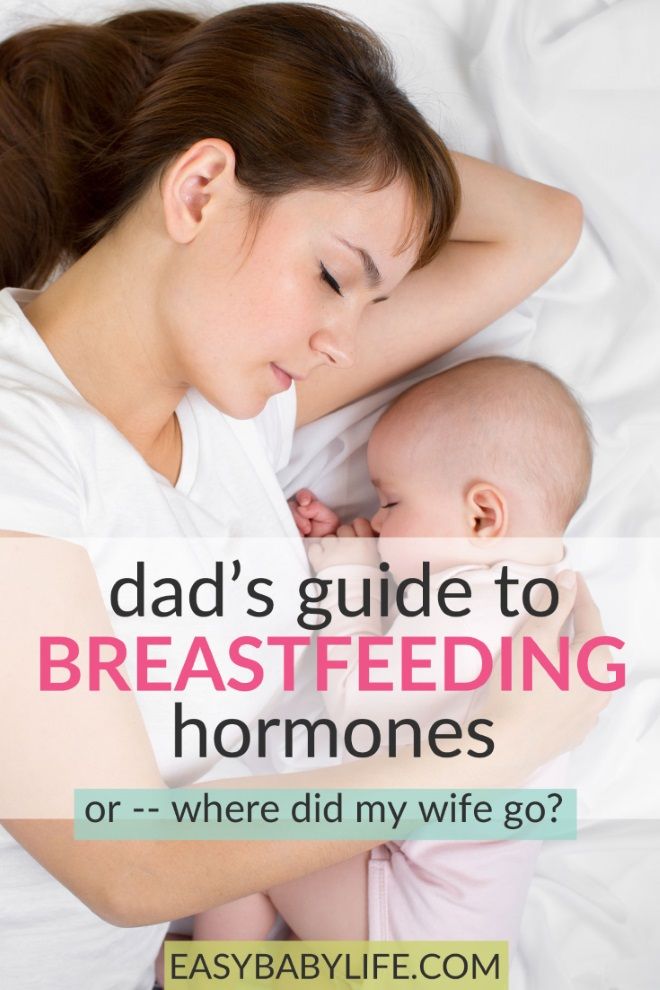Mouth feeding babies
Pre-Chewing Food For Babies: The Research Continues
On a trip to a society of forager-farmers in the Bolivian Amazon a few years ago, Melanie Martin asked a dozen Tsimane mothers to chew up their food and spit it into a cup — instead of their babies’ mouths. The Tsimane, like certain cultures around the world, feed their babies through premastication. When asked why they pre-chewed meals, responses varied.
“They’re just making sure there’s nothing in that spoonful that is going to burn the kid’s mouth or choke them,” says Martin, who visited the group when she was a graduate student in anthropology at the University of California, Santa Barbara.
Martin is part of a small group of researchers actively studying — and sometimes even trying — this ancient feeding practice. Ethnographers have documented premastication on every continent and in every type of society from hunter-gatherers to farmers. It remains surprisingly common in parts of the world today. Eighty percent of babies in Nigeria receive pre-chewed food, as do a quarter of infants in Gabon. Field workers have observed the practice throughout East and South Asia. Among HIV-infected mothers in Argentina, Brazil and Peru, many have heard of premastication, while 4 percent practice it. And in the United States, 1 in 7 caregivers — particularly black caregivers — report pre-chewing food.
Despite the prevalence, few leading public health agencies mention premastication in their guidelines and those that do discourage it due to a host of potential health risks.
Premastication is conspicuously absent from the World Health Organization’s literature on introducing babies to solid foods. (WHO spokesman Christian Lindmeier said an expert was unavailable to comment on the issue.) Meanwhile, the American Academy of Pediatrics advises against the practice due to the risk of disease transmission. While not addressing premastication directly, the American Academy of Pediatric Dentistry cautions against sharing utensils among family members.
Researchers have linked premastication to the spread of HIV, hepatitis B, dental caries, and syphilis from caregiver to baby. But beyond single-pathogen studies, broader inquiry into the practice such as its possible role in nutrition, immune health and parental bonding remains woefully scant.
But beyond single-pathogen studies, broader inquiry into the practice such as its possible role in nutrition, immune health and parental bonding remains woefully scant.
Breast milk alone ceases to meet a baby’s nutritional needs around 6 months of age. But it takes up until about age 2 for babies to grow a full set of teeth. For over a year, babies occupy a nutritional gray zone. They can neither thrive on milk alone nor eat adult foods without modification such as blending, boiling or chopping. The rising popularity of baby-led weaning, or letting babies feed themselves from the adult table, partly circumvents these challenges. But foods rich in micronutrients that are a potential choking hazard, such as raw vegetables, chewy meats and nuts, remain a difficulty.
In 2010, epidemiologist Jean-Pierre Habicht and his wife, anthropologist Gretel Pelto, of Cornell University, hypothesized that premastication arose to close that nutritional gap. Writing in Maternal & Child Nutrition, they proposed that premastication may be as vital to child health as breastfeeding.
In developed countries, many older babies meet their nutritional needs with fortified foods such as Gerber and Cheerios. But in developing nations, where access to fortified foods remains limited and infections run rampant, physical and intellectual stunting is widespread, particularly in babies just starting on solids.
Nutrition aside, Habicht and Pelto further argued that because breast milk and saliva share many of the same antibodies, the beneficial bacteria present in premasticated food may protect against disease. The couple’s ideas created a stir, prompting the journal to publish six commentaries from prominent researchers on both sides of the premastication divide.
“The campaign against the barbaric practice of premastication,” Habicht says, “is very similar to the campaign in the 30s and 40s against the barbaric practice of breastfeeding.”
Researchers studying premastication suspect that Paleolithic parents pre-chewed vegetables, nuts and hunks of meat for their offspring.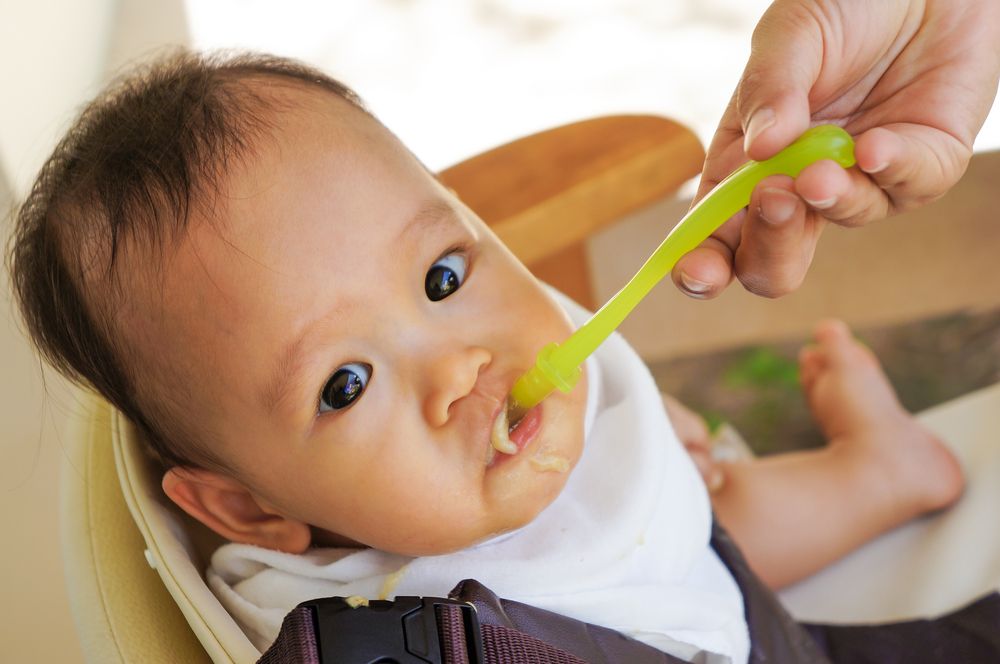 But it’s impossible to prove since pre-chewing leaves no archaeological trace.
But it’s impossible to prove since pre-chewing leaves no archaeological trace.
The first known written record of the practice appears in 1025 AD. “After the first two teeth have appeared, a progressively stronger aliment [than breast milk] is to be considered,” wrote the Persian philosopher Avicenna in his five-part Canon of Medicine. “Hard things, however, must not be allowed. At first, bread is given which the nurse has masticated.”
By the 1600s, concerns over premastication had begun to emerge. Though noting that the common practice may aid in digestion, the German physician Michael Ettmüller cautioned that, should a caregiver’s gums be infected, the child may also receive that “morbificial Tincture.”
By the 20th century, evidence suggests the practice was being actively snuffed out. In the 1940s, researchers from the University of New Mexico in Albuquerque studying the displaced Shoshone Native Americans in Nevada found that mothers exclusively nursed their babies until they were able to eat on their own, or around age 1 or 2.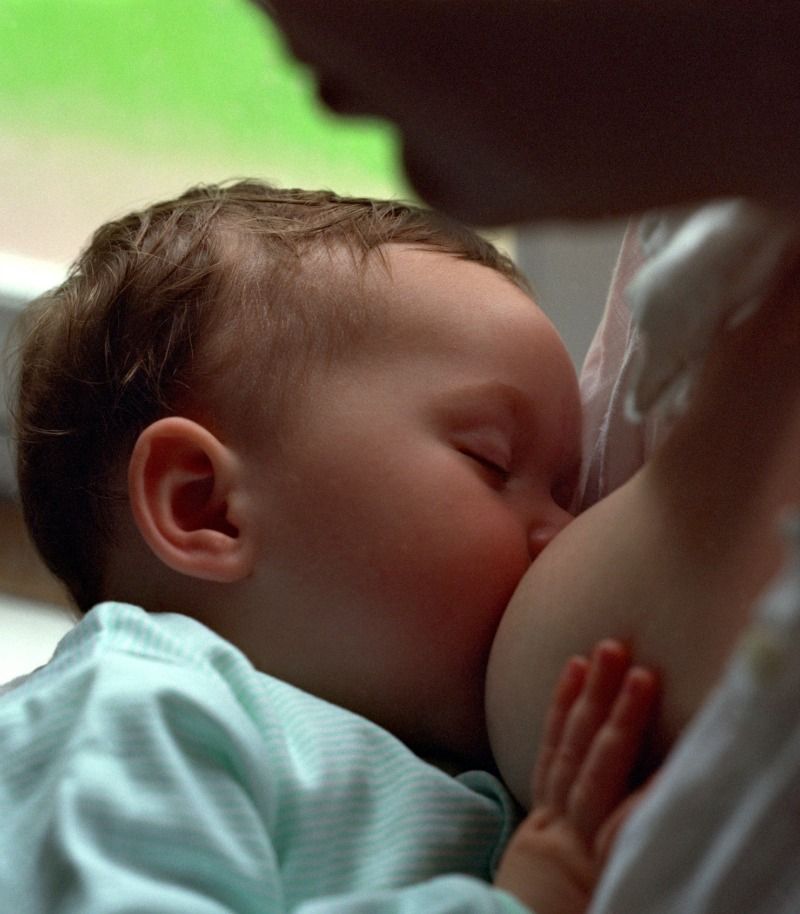 That delayed start to solids was leading to high rates of anemia. “Some Indians informed the investigators that in the past their parents used to chew food and then place this previously masticated food in the infant’s mouth,” the authors wrote in The Journal of Nutrition in 1943. “Such a process was considered unhygienic by the invading culture and the practice was abandoned.”
That delayed start to solids was leading to high rates of anemia. “Some Indians informed the investigators that in the past their parents used to chew food and then place this previously masticated food in the infant’s mouth,” the authors wrote in The Journal of Nutrition in 1943. “Such a process was considered unhygienic by the invading culture and the practice was abandoned.”
In more recent years, premastication briefly became a buzzword in 2012 when Clueless star Alicia Silverstone posted a video of herself chewing the vegetables in her miso soup and transferring the resulting blob into her 10-month-old son’s mouth. The video went viral and prompted a range of reactions from disgust to solidarity.
As a nutrition expert with the United Nations, Joel Conkle was aware that mothers and grandmothers in Cambodia would often pre-chew food before giving it to babies. In 2014, he enrolled in a doctoral program at Emory University in Atlanta to study premastication full-time.
Earlier this year, Conkle and his colleagues combed through data from a national survey collected when babies were 10 months old, the age at which premastication tends to peak. Of the 1,770 women who responded at that point, 203 reported pre-chewing food in the previous two weeks. Conkle measured the prevalence of diarrhea in both groups: About 11 percent of babies in the conventional feeding group developed diarrhea compared to about 16 percent of babies in the premastication group.
Since diarrhea is one of the leading causes of death in children, the finding is particularly troubling for low-income countries. Even when it’s not lethal, chronic diarrhea puts infants at risk for malnutrition, says Conkle, who published the results online in Maternal & Child Nutrition last week.
Past studies have linked premastication to the transfer of various pathogens from caregiver to baby. A 2009 case study involving three U.S. children found evidence of HIV transmission when infected caregivers fed pre-chewed food to babies. That prompted the Centers for Disease Control and Prevention to advise caregivers with HIV to avoid premastication.
That prompted the Centers for Disease Control and Prevention to advise caregivers with HIV to avoid premastication.
“Where safe, affordable, alternative feeding options are available, HIV-infected caregivers should refrain from this practice,” says Aditya Gaur, an infectious disease specialist at St. Jude’s Children’s Research Hospital in Memphis, Tennessee and the lead author on the HIV study.
But Cornell researchers Habicht and Pelto argue that the tendency to focus on a single pathogen or disease obscures the larger role premastication may play in nutrition and immune health. The duo has found an unexpected ally among supporters of the so-called hygiene hypothesis, which proposes that asthma, irritable bowel syndrome and allergies are rising in wealthy countries due to an overly sterile, or low-bacteria, environment.
Several years ago, Swedish researchers found that babies born to parents who cleaned their pacifiers by sucking on them had lower rates of allergies and eczema than babies born to parents who exclusively cleaned pacifiers with soap and water. Premasticated food may likewise be good for children, at least in wealthy areas, says Bill Hesselmar, a pediatric allergist at the University of Gothenburg and the study’s lead author. “If you worry too much,” he says, “you won’t even kiss your child.”
Premasticated food may likewise be good for children, at least in wealthy areas, says Bill Hesselmar, a pediatric allergist at the University of Gothenburg and the study’s lead author. “If you worry too much,” he says, “you won’t even kiss your child.”
Deep in the rainforest, the Tsimane (pronounced chee-MAH-nay), tend to subsist on what they fish or hunt, and what they can grow, which includes rice, plantains, and manioc, a root vegetable also known as cassava. Their signature dish is jo’na – a stew made with manioc and meat or fish that when caught fresh is slow roasted for days and generously seasoned. Nowadays, the Tsimane visit regional markets and stock up on starches like pasta and charqie, a tough dried meat similar to beef jerky, which they then add to the jo’na.
“Basically they eat variations of the same stew with meat or fish and not really any flavoring except for a ton of salt,” says Martin, now an anthropologist at Yale University, who describes the stew as bland but delicious.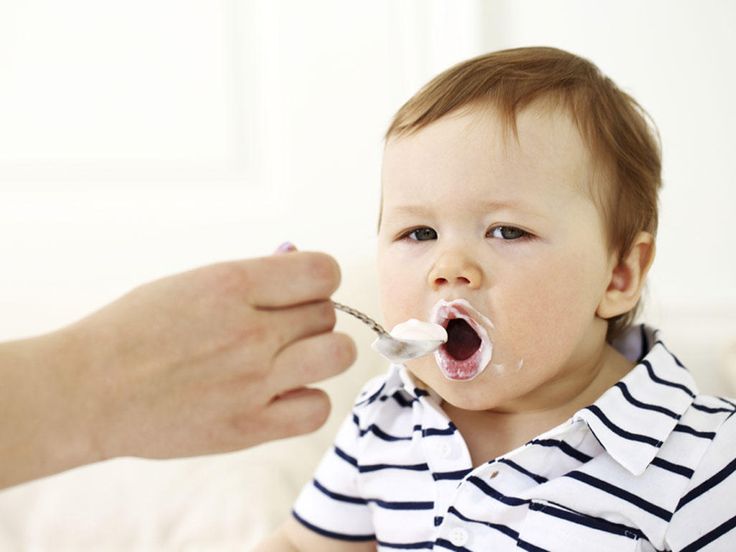
Over her lifetime, the average Tsimane woman bears nine children and breastfeeds exclusively until the baby reaches a few months old. At that point, many mothers start setting the babies on their laps during meals and feeding them pre-chewed food.
A few years ago, Martin along with Cliff Han, a geneticist at Los Alamos National Laboratories in New Mexico, collected saliva from 12 mother-baby pairs as well as premasticated jo’na samples from the mothers. Han then analyzed the bacteria in the samples in the lab.
Previous research has shown that bacteria, such as cavity-causing Streptococcus mutans, can travel from mother to child. Cavities are common in Tsimane children and their mothers. Toothbrushing is rare as is basic dental health care, Martin says, so “their teeth are awful.”
Han’s analysis showed that, at least up until age 2, it was impossible to identify mother-baby pairs through their oral bacteria, including Streptococcus mutans. In many cases, the strep was high in the mother but low in the baby. (In one case, Han found a baby with a high strep load and a mother with a low load.)
(In one case, Han found a baby with a high strep load and a mother with a low load.)
This means that tooth decay is likely arising from a different source than premasticated food. “Even though the mother feeds her microbiome to the baby, not everything can attach,” says Han, who presented the team’s findings at the Human Biology Association conference in Calgary, Canada in 2014.
For her part, Martin says she became pregnant while traveling with her husband to Tsimane territory three years ago, and that they decided then to follow the local eating tradition and pre-chew food after their daughter was born. “Spending all this time with Tsimane moms and watching how they feed their kids,” she recalls, “my one takeaway was that my kid was going to grow up sitting in my lap and eating everything that I eat.”
“It’s just like the laziest, easiest thing you can do,” she adds. “You never have to make kid food.”
Conkle says his wife briefly experimented with premastication as well — there is no known evidence for male pre-chewers — but it didn’t last. As he researched the practice, he began to question the purported benefits, particularly in the modern world. What is rarely mentioned, he says, is whether or not the mother is still breastfeeding, which would create a different suite of bacteria in the mouth and gut than babies who have weaned. Comparing and contrasting the various sorts of foods being pre-chewed is also largely unexamined, he says. Pre-chomping on a goldfish cracker, for instance, would yield none of the nutritional benefits found in meat or nuts, plus the starches would increase a child’s likelihood of developing cavities.
As he researched the practice, he began to question the purported benefits, particularly in the modern world. What is rarely mentioned, he says, is whether or not the mother is still breastfeeding, which would create a different suite of bacteria in the mouth and gut than babies who have weaned. Comparing and contrasting the various sorts of foods being pre-chewed is also largely unexamined, he says. Pre-chomping on a goldfish cracker, for instance, would yield none of the nutritional benefits found in meat or nuts, plus the starches would increase a child’s likelihood of developing cavities.
“When I looked at the evidence, I couldn’t really say if [premastication] was a good idea or a bad idea,” Conkle says, though he adds that the real reason premastication never took root in his household likely had less to do with science than upbringing.
“We didn’t premasticate regularly,” he says, “mostly because it’s not part of our current culture.”
Sujata Gupta is a Vermont-based science journalist. Her work has appeared online and in print in The New Yorker, New Scientist, Nature, High Country News, Scientific American, Wired, and Psychology Today among other publications.
Her work has appeared online and in print in The New Yorker, New Scientist, Nature, High Country News, Scientific American, Wired, and Psychology Today among other publications.
Should You Pre-Chew Your Baby's Food?
Pre-chewing your baby's food can boost his or her immune system. (Image credit: <a href="http://image.shutterstock.com/display_pic_with_logo/187633/187633,1215124044,1/stock-photo-mother-feeding-baby-food-to-baby-14501131.jpg">Image</a> via Shutterstock)The actress Alicia Silverstone got a lot of grief last week after posting a video to her blog in which she is shown "pre-chewing" her baby's food, and offering it to him straight from her mouth. The "Clueless" star's 10-month-old son, Bear, appears to enjoy being fed like a baby bird. "He literally crawls across the room to attack my mouth if I'm eating," Silverstone blogged.
While most people who commented on the video were quick to voice their disgust and vilify the ill-considered whims of celebrity parents, science suggests that "pre-mastication," or the pre-chewing of adult food for infants, is actually a traditional and healthy feeding method. Standard practice among our blender-lacking ancestors, pre-chewing is still the norm in many non-Western cultures. The act exposes infants to their mothers' saliva, giving them an immune system boost that they can't get from the sterile, pulverized baby food bought in stores.
Standard practice among our blender-lacking ancestors, pre-chewing is still the norm in many non-Western cultures. The act exposes infants to their mothers' saliva, giving them an immune system boost that they can't get from the sterile, pulverized baby food bought in stores.
The benefits of pre-chewing have only recently been investigated, but they appear to parallel those of breast-feeding.
Babies start requiring non-milk food in their diets at six months old, but they don't develop the molars they need to chew most foods until age 18 to 24 months. According to research led by Gretel Pelto, an anthropologist at Cornell University, pre-mastication was the solution to feeding infants during this interim period for most of human history, and remains the method used in many cultures today. Rather than being unhygienic, Pelto and many other scientists think the feeding method carries on the immune-system-building process that begins with breastfeeding. By exposing infants to traces of disease pathogens present in a mother's saliva, it gears up their production of antibodies, teaching their immune systems how to deal with those same pathogens later. [Could Humans Live Without Bacteria?]
[Could Humans Live Without Bacteria?]
It may also prevent the onset of autoimmune diseases, such as asthma, that are very common in industrialized societies. These conditions arise when one's immune system mistakenly attacks one's own cells, and such ailments have been strongly linked to underexposure to diseases during childhood. "The epidemiological evidence [shows there are] increases in asthma and various allergic conditions in children and adults whose environments had significantly reduced pathogen exposure in early life," Pelto told Life's Little Mysteries.
The most common argument against pre-mastication is that infants occasionally catch infectious diseases from the saliva itself. For example, women with HIV are advised against pre-chewing their babies' food. However, research shows that disease transmission through pre-mastication is far less common than was previously assumed, because natural antibodies in saliva significantly reduce the infectiousness of the disease pathogens present there.![]() Research by the immunologist Samuel Baron of the University of Texas Medical Branch has demonstrated that the risk of HIV transmission via saliva is actually very low — lower than the risk of transmission via breast milk.
Research by the immunologist Samuel Baron of the University of Texas Medical Branch has demonstrated that the risk of HIV transmission via saliva is actually very low — lower than the risk of transmission via breast milk.
Breast-feeding was outmoded in the 1950s, and has since seen a renaissance. Silverstone may simply be ahead of the curve regarding pre-mastication. "The evidence for breast milk is overwhelming," Pelto said. We think the story is identical for both breastfeeding and pre-mastication — they save lives by ensuring good nutrition and good development of the immune system. The evidence for pre-mastication has yet to be completed, but the logic is clear and the epidemiological evidence supports it."
Follow Natalie Wolchover on Twitter @nattyover. Follow Life's Little Mysteries on Twitter @llmysteries, then join us on Facebook.
Natalie Wolchover was a staff writer for Live Science from 2010 to 2012 and is currently a senior physics writer and editor for Quanta Magazine. She holds a bachelor's degree in physics from Tufts University and has studied physics at the University of California, Berkeley. Along with the staff of Quanta, Wolchover won the 2022 Pulitzer Prize for explanatory writing for her work on the building of the James Webb Space Telescope. Her work has also appeared in the The Best American Science and Nature Writing and The Best Writing on Mathematics, Nature, The New Yorker and Popular Science. She was the 2016 winner of the Evert Clark/Seth Payne Award, an annual prize for young science journalists, as well as the winner of the 2017 Science Communication Award for the American Institute of Physics.
She holds a bachelor's degree in physics from Tufts University and has studied physics at the University of California, Berkeley. Along with the staff of Quanta, Wolchover won the 2022 Pulitzer Prize for explanatory writing for her work on the building of the James Webb Space Telescope. Her work has also appeared in the The Best American Science and Nature Writing and The Best Writing on Mathematics, Nature, The New Yorker and Popular Science. She was the 2016 winner of the Evert Clark/Seth Payne Award, an annual prize for young science journalists, as well as the winner of the 2017 Science Communication Award for the American Institute of Physics.
Breastfeeding in the first month: what to expect
Not sure how to establish lactation and increase milk production? If you need help, support, or just want to know what to expect, read our first month breastfeeding advice
Share this information
The first weeks of breastfeeding are a very stressful period.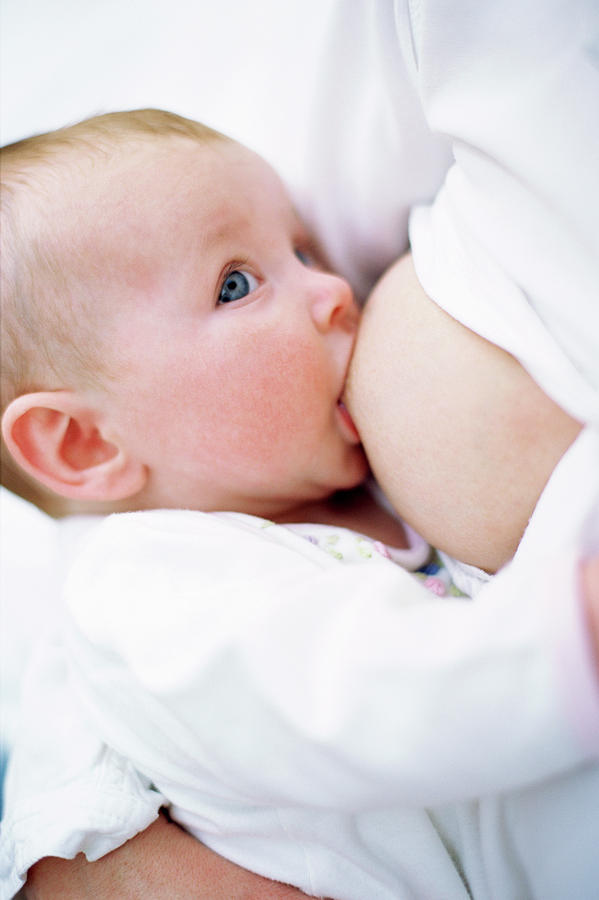 If at times you feel like you can't handle it, know that you are not alone. Feeding your baby all day long is completely natural and helps produce breast milk, but can be quite tiring at times. Be patient, think about yourself and remember: after the first month, when milk production stabilizes, it will become easier.
If at times you feel like you can't handle it, know that you are not alone. Feeding your baby all day long is completely natural and helps produce breast milk, but can be quite tiring at times. Be patient, think about yourself and remember: after the first month, when milk production stabilizes, it will become easier.
How often should a baby be breastfed?
Babies are born with a small stomach that grows rapidly with increasing milk production: in the first week it is no larger than an apricot, and after two weeks it is already the size of a large chicken egg. 1.2 Let the child eat as much as he wants and when he wants. This will help him quickly regain the weight lost after birth and grow and develop further.
“Be prepared to feed every two to three hours throughout the day. At night, the intervals between feedings can be longer: three to four or even five hours, says Cathy Garbin, a recognized international expert on breastfeeding. Some eat quickly and are satiated in 15 minutes, while others take an entire hour to feed. Do not compare your breastfeeding regimen with that of other mothers - it is very likely that there will be nothing in common between them.
Do not compare your breastfeeding regimen with that of other mothers - it is very likely that there will be nothing in common between them.
At each feed, give your baby a full meal from one breast and then offer a second one, but don't worry if the baby doesn't take it. When the baby is full, he lets go of his chest and at the same time looks relaxed and satisfied - so much so that he can immediately fall asleep. The next time you feed, start on the other breast. You can monitor the order of the mammary glands during feeding using a special application.
Why does the child always ask for a breast?
The first month is usually the hardest time to breastfeed. But do not think that because the baby is constantly hungry and asks for a breast almost every 45 minutes, then you do not have enough milk.
In the first month, the baby needs to eat frequently to start and stimulate the mother's milk production. It lays the foundation for a stable milk supply in the future.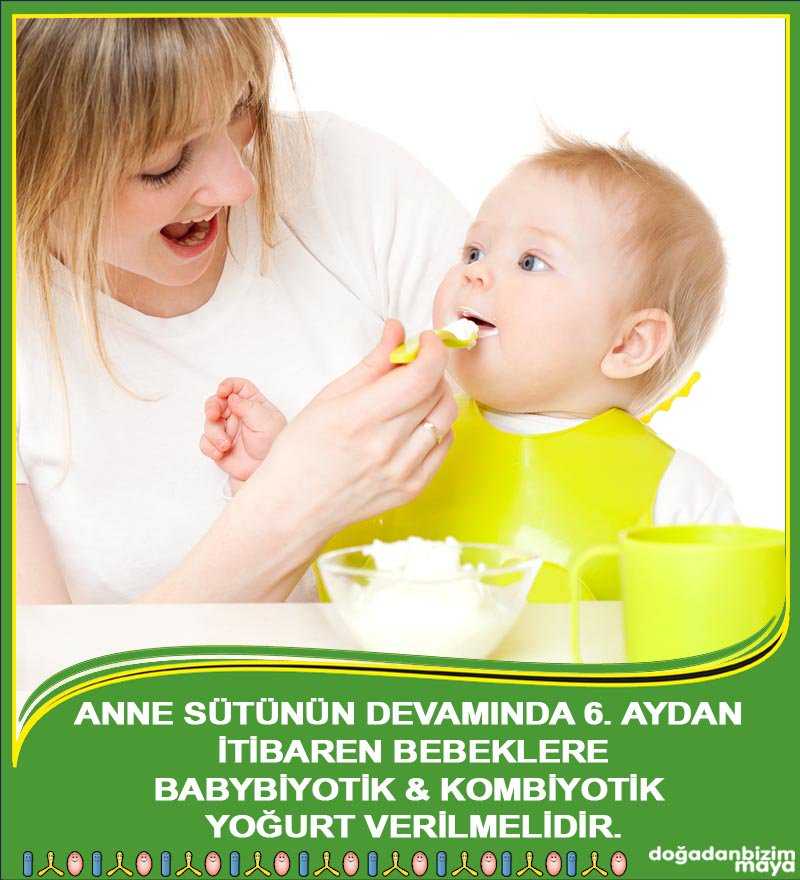 3
3
In addition, we must not forget that the child needs almost constant contact with the mother. The bright light and noise of the surrounding world at first frighten the baby, and only by clinging to his mother, he can calm down.
Sarah, mother of three from the UK, confirms: “Crying is not always a sign of hunger. Sometimes my kids just wanted me to be around and begged for breasts to calm them down. Use a sling. Place the cradle next to the bed. Don't look at the clock. Take advantage of every opportunity to relax. Forget about cleaning. Let those around you take care of you. And not three days, but six weeks at least! Hug your baby, enjoy the comfort - and trust your body."
Do I need to feed my baby on a schedule?
Your baby is still too young for a strict daily routine, so
forget about breastfeeding schedules and focus on his needs.
“Volumes have been written about how to feed a baby on a schedule, but babies don't read or understand books,” Cathy says.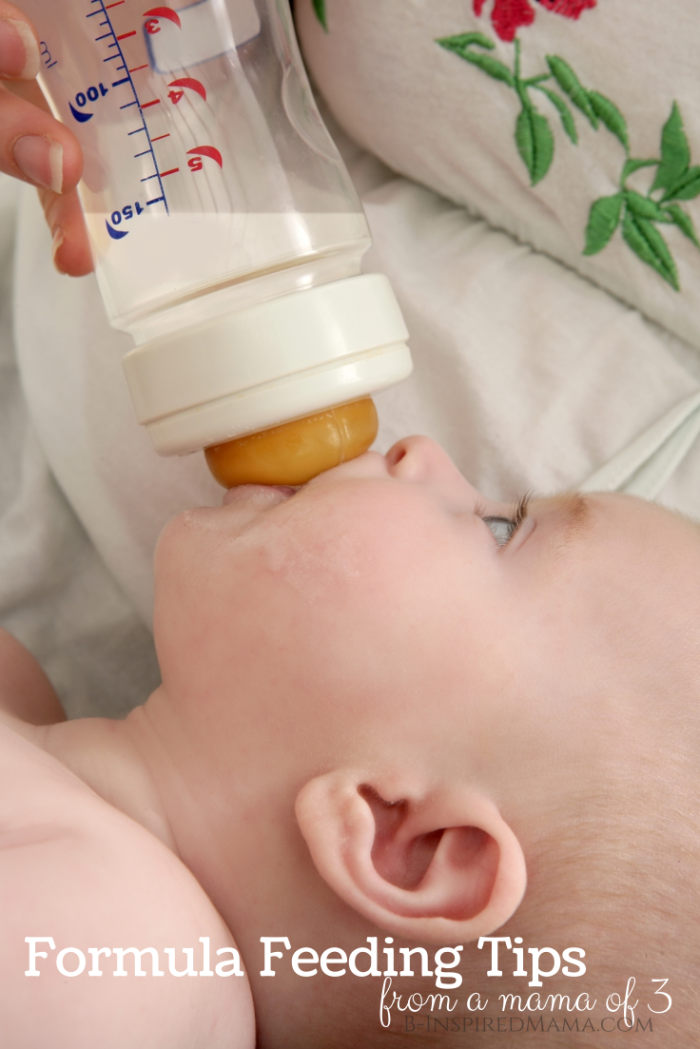 - All children are different. Some people can eat on a schedule, but most can't. Most often, over time, the child develops his own schedule.
- All children are different. Some people can eat on a schedule, but most can't. Most often, over time, the child develops his own schedule.
Some mothers report that their babies are fine with scheduled feedings, but they are probably just the few babies who would eat every four hours anyway. Adults rarely eat and drink the same foods at the same time of day - so why do we expect this from toddlers?
Offer your baby the breast at the first sign of hunger. Crying is already the last stage, so be attentive to early signs: the baby licks his lips, opens his mouth, sucks his fist, turns his head with his mouth open - looking for the breast. 4
What is a "milk flush"?
At the beginning of each feed, a hungry baby actively sucks on the nipple,
thereby stimulating the milk flow reflex - the movement of milk through the milk ducts. 5
“Nipple stimulation triggers the release of the hormone oxytocin,” explains Cathy. “Oxytocin is distributed throughout the body and causes the muscles around the milk-producing glands to contract and the milk ducts to dilate. This stimulates the flow of milk.
This stimulates the flow of milk.
If the flushing reflex fails, milk will not come out. This is a hormonal response, and under stress it may not work at all or work poorly. Therefore, it is so important that you feel comfortable and calm when feeding.
“Studies show that each mother has a different rhythm of hot flashes during one feed,” Kathy continues, “Oxytocin is a short-acting hormone, it breaks down in just 30-40 seconds after formation. Milk begins to flow, the baby eats, the effect of oxytocin ends, but then a new rush of milk occurs, the baby continues to suckle the breast, and this process is repeated cyclically. That is why, during feeding, the child periodically stops and rests - this is how nature intended.
The flow of milk may be accompanied by a strong sensation of movement or tingling in the chest, although 21% of mothers, according to surveys, do not feel anything at all. 5 Cathy explains: “Many women only feel the first rush of milk. If you do not feel hot flashes, do not worry: since the child eats normally, most likely, you simply do not understand that they are.
If you do not feel hot flashes, do not worry: since the child eats normally, most likely, you simply do not understand that they are.
How do you know if a baby is getting enough milk?
Since it is impossible to track how much milk a baby eats while breastfeeding, mothers sometimes worry that the baby is malnourished. Trust your child and your body.
After a rush of milk, the baby usually begins to suckle more slowly. Some mothers clearly hear how the baby swallows, others do not notice it. But one way or another, the child himself will show when he is full - just watch carefully. Many babies make two or three approaches to the breast at one feeding. 6
“When a child has had enough, it is noticeable almost immediately: a kind of “milk intoxication” sets in. The baby is relaxed and makes it clear with his whole body that he is completely full, says Katie, “Diapers are another great way to assess whether the baby is getting enough milk. During this period, a breastfed baby should have at least five wet diapers a day and at least two portions of soft yellow stool, and often more. ”
”
From one month until weaning at six months of age, a baby's stool (if exclusively breastfed) should look the same every day: yellow, grainy, loose, and watery.
When is the child's birth weight restored?
Most newborns lose weight in the first few days of life. This is normal and should not be cause for concern. As a rule, weight is reduced by 5-7%, although some may lose up to 10%. One way or another, by 10–14 days, almost all newborns regain their birth weight. In the first three to four months, the minimum expected weight gain is an average of 150 grams per week. But one week the child may gain weight faster, and the next slower, so it is necessary that the attending physician monitor the health and growth of the baby constantly. 7.8
At the slightest doubt or signs of dehydration, such as
dark urine, no stool for more than 24 hours, retraction of the fontanel (soft spot on the head), yellowing of the skin, drowsiness, lethargy, lack of appetite (ability to four to six hours without feeding), you should immediately consult a doctor.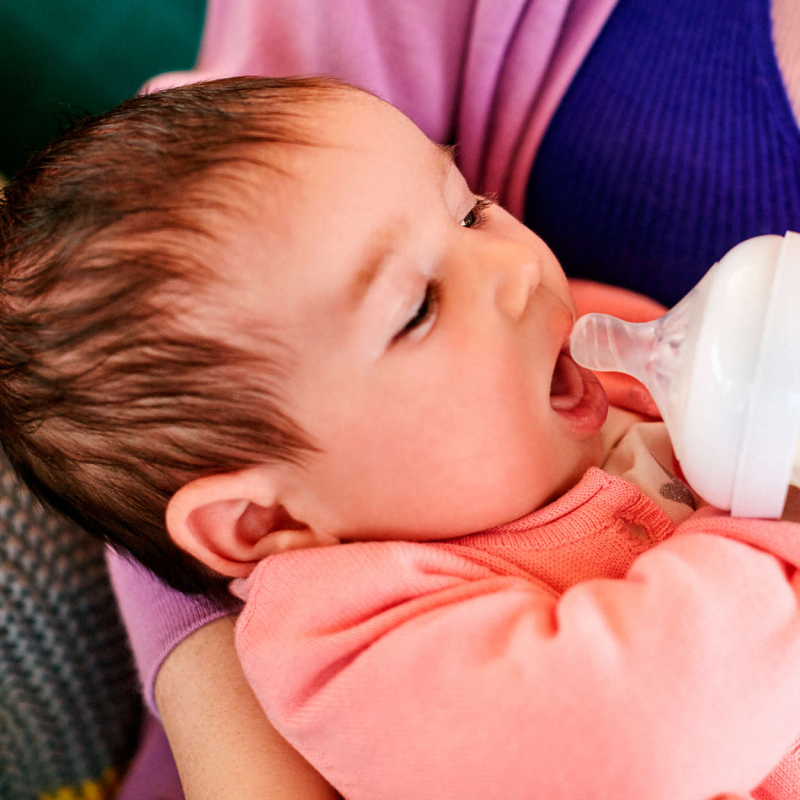 7
7
What is "cluster feeding"?
When a baby asks to breastfeed very often for several hours, this is called cluster feeding. 6 The peak often occurs in the evening between 18:00 and 22:00, just when many babies are especially restless and need close contact with their mother. Most often, mothers complain about this in the period from two to nine weeks after childbirth. This is perfectly normal and common behavior as long as the baby is otherwise healthy, eating well, gaining weight normally, and appears content throughout the day. 9
Cluster feeding can be caused by a sharp jump in the development of the body - during this period the baby especially needs love, comfort and a sense of security. The growing brain of a child is so excited that it can be difficult for him to turn off, or it just scares the baby. 9 If a child is overworked, it is often difficult for him or her to calm down on his own, and adult help is needed. And breastfeeding is the best way to calm the baby, because breast milk is not only food, but also pain reliever and a source of happiness hormones. 10
And breastfeeding is the best way to calm the baby, because breast milk is not only food, but also pain reliever and a source of happiness hormones. 10
“Nobody told me about cluster feeding, so for the first 10 days I just went crazy with worry - I was sure that my milk was not enough for the baby,” recalls Camille, a mother from Australia, “It was a very difficult period . I was advised to pump and supplement until I finally contacted the Australian Breastfeeding Association. There they explained to me what was happening: it turned out that it was not about milk at all.
Remember, this is temporary. Try to prepare dinner for yourself in the afternoon, when the baby is fast asleep, so that in the evening, when he begins to often breastfeed, you have the opportunity to quickly warm up the food and have a snack. If you are not alone, arrange to carry and rock the baby in turns so that you have the opportunity to rest. If you have no one to turn to for help and you feel that your strength is leaving you, put the baby in the crib and rest for a few minutes, and then pick it up again.
Ask your partner, family and friends to help you with household chores, cooking and caring for older children if you have any. If possible, hire an au pair. Get as much rest as possible, eat well and drink plenty of water.
“My daughter slept a lot during the day, but from 23:00 to 5:00 the cluster feeding period began, which was very tiring,” recalls Jenal, a mother from the USA, “My husband tried his best to make life easier for me - washed, cleaned, cooked, changed diapers, let me sleep at every opportunity and never tired of assuring me that we were doing well.
If you are concerned about the frequency of breastfeeding, it is worth contacting a specialist. “Check with a lactation consultant or doctor to see if this is indicative of any problems,” recommends Cathy. “Resist the temptation to supplement your baby with formula (unless recommended by your doctor) until you find the cause. It may not be a matter of limited milk production at all - it may be that the child is inefficiently sucking it.
When will breastfeeding become easier?
This early stage is very special and does not last long. Although sometimes it seems that there will be no end to it, rest assured: it will get easier soon! By the end of the first month, breast milk production will stabilize, and the baby will become stronger and learn to suckle better. 2.3 Any problems with latch on by this time will most likely be resolved and the body will be able to produce milk more efficiently so inflammation and leakage of milk will begin to subside.
“The first four to six weeks are the hardest, but then things start to get better,” Cathy assures. It just needs to be experienced!”
The longer breastfeeding continues, the more benefits it brings, from saving on formula and improving sleep quality 11–13 to boosting your baby's immune system 14 and reducing your risk of certain cancers. 15
“When you feel like you're pushing yourself, try to go from feed to feed and day to day,” says Hannah, a UK mom. “I was sure I wouldn’t make it to eight weeks. And now I have been breastfeeding for almost 17 weeks, and I dare say it is very easy.”
“I was sure I wouldn’t make it to eight weeks. And now I have been breastfeeding for almost 17 weeks, and I dare say it is very easy.”
Read the resource Breastfeeding Beyond the First Month: What to Expect
Literature
1 Naveed M et al. An autopsy study of relationship between perinatal stomach capacity and birth weight. Indian J Gastroenterol .1992;11(4):156-158. - Navid M. et al., Association between prenatal gastric volume and birth weight. Autopsy. Indian J Gastroenterol. 1992;11(4):156-158.
2 Neville MC et al. Studies in human lactation: milk volumes in lactating women during the onset of lactation and full lactation .Am J Clinl Nutr . 1988;48(6):1375-1386. at the beginning and at the peak of lactation." Am F Clean Nutr. 1988;48(6):1375-1386.
3 Kent JC et al. Principles for maintaining or increasing breast milk production. J Obstet , Gynecol , & Neonatal Nurs . 2012;41(1):114-121. - Kent J.S. et al., "Principles for Maintaining and Increasing Milk Production". J Obstet Ginecol Neoneutal Nurs. 2012;41(1):114-121.
Principles for maintaining or increasing breast milk production. J Obstet , Gynecol , & Neonatal Nurs . 2012;41(1):114-121. - Kent J.S. et al., "Principles for Maintaining and Increasing Milk Production". J Obstet Ginecol Neoneutal Nurs. 2012;41(1):114-121.
4 Australian Breastfeeding Feeding cues ; 2017 Sep [ cited 2018 Feb ]. - Australian Breastfeeding Association [Internet], Feed Ready Signals; September 2017 [cited February 2018]
5 Kent JC et al. Response of breasts to different stimulation patterns of an electric breast pump. J Human Lact . 2003;19(2):179-186. - Kent J.S. et al., Breast Response to Different Types of Electric Breast Pump Stimulation. J Human Lact (Journal of the International Association of Lactation Consultants). 2003;19(2):179-186.
J Human Lact (Journal of the International Association of Lactation Consultants). 2003;19(2):179-186.
6) Kent JC et al . Volume and frequency of breastfeedings and fat content of breast milk throughout the day. Pediatrics. 2006;117(3): e 387-395. - Kent J.S. et al., "Amount and frequency of breastfeeding and fat content of breast milk during the day." Pediatrix (Pediatrics). 2006;117(3):e387-95.
7 Lawrence RA, Lawrence RM. Breastfeeding: A guide for the medical profession. 7th ed. Maryland Heights MO, USA: Elsevier Mosby; 2010. 1128 p . - Lawrence R.A., Lawrence R.M., "Breastfeeding: A guide for healthcare professionals." Seventh edition. Publisher Maryland Heights , Missouri, USA: Elsevier Mosby; 2010. P. 1128.
8 World Health Organization. [Internet]. Child growth standards; 2018 [cited 2018 Feb] - World Health Organization. [Internet]. Child Growth Standards 2018 [cited February 2018].
[Internet]. Child growth standards; 2018 [cited 2018 Feb] - World Health Organization. [Internet]. Child Growth Standards 2018 [cited February 2018].
9 Australian Breastfeeding Association . [ Internet ]. Cluster feeding and fussing babies ; Dec 2017 [ cited 2018 Feb ] - Australian Breastfeeding Association [Internet], Cluster Feeding and Screaming Babies; December 2017 [cited February 2018].
10 Moberg KU, Prime DK. Oxytocin effects in mothers and infants during breastfeeding. Infant . 2013;9(6):201-206.- Moberg K, Prime DK, "Oxytocin effects on mother and child during breastfeeding". Infant. 2013;9(6):201-206.
11 U.S. Department of Health & Human Services [Internet]. Surgeon General Breastfeeding factsheet; 2011 Jan 20 [cited 2017 Feb] - Department of Health and Human Services [Internet], "Breastfeeding Facts from the Chief Medical Officer", Jan 20, 2011 [cited Feb 2017]
12 Kendall-Tackett K et al. The effect of feeding method on sleep duration, maternal well-being, and postpartum depression. clinical lactation. 2011;1;2(2):22-26. - Kendall-Tuckett, K. et al., "Influence of feeding pattern on sleep duration, maternal well-being and the development of postpartum depression." Clinical Lactation. 2011;2(2):22-26.
The effect of feeding method on sleep duration, maternal well-being, and postpartum depression. clinical lactation. 2011;1;2(2):22-26. - Kendall-Tuckett, K. et al., "Influence of feeding pattern on sleep duration, maternal well-being and the development of postpartum depression." Clinical Lactation. 2011;2(2):22-26.
13 Brown A, Harries V. Infant sleep and night feeding patterns during later infancy: Association with breastfeeding frequency, daytime complementary food intake, and infant weight. Breast Med . 2015;10(5):246-252. - Brown A., Harris W., "Night feedings and infant sleep in the first year of life and their association with feeding frequency, daytime supplementation, and infant weight." Brest Med (Breastfeeding Medicine). 2015;10(5):246-252.
14 Hassiotou F et al. Maternal and infant infections stimulate a rapid leukocyte response in breastmilk. Clin Transl immunology. 2013;2(4). - Hassiot F. et al., "Infectious diseases of the mother and child stimulate a rapid leukocyte reaction in breast milk." Clean Transl Immunology. 2013;2(4):e3.
Clin Transl immunology. 2013;2(4). - Hassiot F. et al., "Infectious diseases of the mother and child stimulate a rapid leukocyte reaction in breast milk." Clean Transl Immunology. 2013;2(4):e3.
15 Li DP et al. Breastfeeding and ovarian cancer risk: a systematic review and meta-analysis of 40 epidemiological studies. Asian Pac J Cancer Prev . 2014;15(12):4829-4837. - Lee D.P. et al., "Breastfeeding and the risk of ovarian cancer: a systematic review and meta-analysis of 40 epidemiological studies." Asia Pas J Cancer Prev. 2014;15(12):4829-4837.
Breastfeeding a newborn | What to Expect in the First Week
The first week of a baby's life is a wonderful but hectic time, especially if you haven't breastfed before. Our breastfeeding tips will help you settle in as quickly as possible
Share this information
The first time after childbirth, mothers are often confused. The body is still recovering, and you are already starting to get to know your newborn baby. The emotional state during this period can be unstable, especially between the second and fifth day, when many women have milk 1 and at the same time postpartum depression begins 2 . In addition, people around often expect (and demand) that a woman come to her senses as soon as possible and become a “super mom”. But the best thing to do this first week is just to be with your baby and get breastfeeding going.
The body is still recovering, and you are already starting to get to know your newborn baby. The emotional state during this period can be unstable, especially between the second and fifth day, when many women have milk 1 and at the same time postpartum depression begins 2 . In addition, people around often expect (and demand) that a woman come to her senses as soon as possible and become a “super mom”. But the best thing to do this first week is just to be with your baby and get breastfeeding going.
When should I start breastfeeding my newborn?
Try to breastfeed your baby within the first hour after birth. When the baby latch onto the breast and begins sucking rhythmically, it stimulates the mammary gland cells and starts milk production. 1 It is not for nothing that this time is called the “magic hour”!
“Ideally, the baby should be placed on the mother's stomach immediately after birth so that it can immediately attach to the breast. He won't necessarily eat, but he should be able to,” explains Cathy Garbin, an internationally recognized expert on breastfeeding.
He won't necessarily eat, but he should be able to,” explains Cathy Garbin, an internationally recognized expert on breastfeeding.
“Hold your baby and let him find the breast on his own and put the nipple in his mouth. This is called the breast-seeking reflex. On the Internet you can watch videos that show what this process looks like. If the baby does not latch onto the nipple on its own, the midwife will help to properly attach it to the breast. But for starters, it’s good to give the baby the opportunity to do it on their own. In this case, the optimal position for the mother is reclining. ”
Don't spend that special first hour of your baby's life weighing and swaddling—or at least wait until he's suckling for the first time. Enjoy hugs and close skin-to-skin contact. This promotes the production of oxytocin, the hormone of love, in you and your baby, and oxytocin plays a key role in the supply of the first breast milk - colostrum. 3
“As soon as the obstetricians were convinced that our son was healthy, the three of us — me, my husband and our baby — were left to give us the opportunity to get to know each other. It was a very special hour - an hour of awkwardness, turbulent emotions and bliss. During this time, I breastfed my son twice, ”recalls Ellie, a mother of two from the UK.
It was a very special hour - an hour of awkwardness, turbulent emotions and bliss. During this time, I breastfed my son twice, ”recalls Ellie, a mother of two from the UK.
Did you know that breastfeeding helps to recover after childbirth? This is because oxytocin stimulates uterine contractions. In the first hours after childbirth, this contributes to the natural release of the placenta and reduces blood loss. 4
What if the birth did not go according to plan?
If you had a caesarean section or other complications during childbirth,
You can still establish skin-to-skin contact with your baby and breastfeed him in the first hours after birth.
“If you can't hold your baby, have your partner do it for you and make skin-to-skin contact with the baby. This will give the baby a sense of security, care and warmth so that he can hold on until you recover, ”Katie advises.
If the baby is unable to breastfeed, it is advisable to start expressing milk as early as possible and do so as often as possible until the baby is able to feed on its own. “While breastfeeding in the first hours after birth lays an excellent foundation for the future, it is not so important,” Cathy reassures. “It is much more important to start lactation so that in the future, if necessary, you can start breastfeeding.”
“While breastfeeding in the first hours after birth lays an excellent foundation for the future, it is not so important,” Cathy reassures. “It is much more important to start lactation so that in the future, if necessary, you can start breastfeeding.”
To start milk production, you can express milk manually or use a breast pump that can be given to you at the hospital. 5 And with expressed precious colostrum, it will be possible to feed the child. This is especially important if the baby was born premature or weak, since breast milk is extremely healthy.
If a baby was born prematurely or has a medical condition and cannot be breastfed immediately, this is no reason not to continue breastfeeding. “I have worked with many new mothers who were unable to breastfeed their baby for the first six weeks due to preterm labor or other reasons. Nevertheless, all of them later successfully switched to breastfeeding,” says Kathy.
Does the baby latch on correctly?
Correct breastfeeding is essential for successful breastfeeding 6 , as it determines how effectively the baby will suckle milk and hence grow and develop. Latching on the breast incorrectly can cause sore or damaged nipples, so don't hesitate to ask your doctor to check that your baby is properly attached to the breast, even if you are told that everything is fine and you do not see obvious problems - especially while you are in the hospital.
Latching on the breast incorrectly can cause sore or damaged nipples, so don't hesitate to ask your doctor to check that your baby is properly attached to the breast, even if you are told that everything is fine and you do not see obvious problems - especially while you are in the hospital.
“While I was in the hospital, I called the doctor at every feed and asked me to check if I was breastfeeding correctly,” says Emma, mother of two from Australia. - There were several cases when it seemed to me that everything seemed to be right, but it was painful to feed, and the doctor helped me take the baby off the breast and attach it correctly. By the time I was discharged, I had already learned to do it confidently.”
When applying to the breast, point the nipple towards the palate. This will allow the baby to take the nipple and part of the areola under it into their mouth. It will be easier for him to suck if he has both the nipple and part of the areola around in his mouth. 6
6
“When a baby latch on properly, it doesn't cause discomfort and it causes a pulling sensation, not pain,” Cathy explains. - The baby's mouth is wide open, the lower lip may be slightly turned outward, and the upper one lies comfortably on the chest. The body language of the child indicates that he is comfortable. There isn't much milk at this early stage, so you probably won't notice your baby swallowing, but he will suckle a lot and nurse frequently."
How often should a newborn be fed?
The frequency and duration of breastfeeding in the first week can vary greatly. “The first 24 hours of life are completely different for different children. Someone sleeps a lot (after all, childbirth is tiring!), And someone often eats, says Katie. - Such a variety greatly confuses young mothers. Everyone gives different advice, so it's important to remember that every mother and child is different."
“Colostrum is thicker than mature breast milk and is produced in smaller amounts, but has many benefits. When the baby eats colostrum, he learns to suck, swallow and breathe until milk begins to flow in more volume, ”explains Cathy.
When the baby eats colostrum, he learns to suck, swallow and breathe until milk begins to flow in more volume, ”explains Cathy.
Milk usually arrives on the second or fourth day after birth. Until this time, the baby is applied to the breast 8-12 times a day (and sometimes more often!), including at night. 7 Feeding may take 10-15 minutes at this stage, or 45 minutes or even an hour, as the baby is just beginning to develop the muscles and coordination needed to suckle effectively.
“At first, the intensity of feeding is very high, often higher than many people realize, and this is shocking to most new mothers,” says Cathy. - Sometimes mom has no time to go to the toilet, take a shower and have a snack. It usually comes as a surprise."
Camille, a mother from Australia, experienced this. “For the first week, Frankie ate every two hours, day and night, and each time it took half an hour to an hour to feed,” she recalls. “My husband and I were completely exhausted!”
Do I need to feed my newborn on a schedule?
The good news is that frequent feeding promotes lactation and stimulates milk production. 7 The more your baby eats, the more milk you will have. Therefore, forget about feeding your newborn on a schedule - this way he will have less chance of feeding. Try to feed your baby when he signals that he is hungry 8 :
7 The more your baby eats, the more milk you will have. Therefore, forget about feeding your newborn on a schedule - this way he will have less chance of feeding. Try to feed your baby when he signals that he is hungry 8 :
- toss and turn in her sleep;
- opens eyes;
- turns his head if he feels a touch on his cheek;
- sticks out tongue;
- groans;
- licks lips;
- sucks fingers;
- is naughty;
- whimpers;
- is crying.
Crying is the last sign of hunger, so if in doubt, just offer your baby the breast. If he bursts into tears, it will be more difficult to feed him, especially at first, when both of you are just learning how to do it. As your baby grows, he will likely eat less frequently and take less time to feed, so breastfeeding will seem more predictable.
Does breastfeeding hurt?
You may have heard that breastfeeding is not painful at all, but in fact, in the early days, many new mothers experience discomfort. And this is not at all surprising, given that the nipples are not used to such frequent and strong sucking.
And this is not at all surprising, given that the nipples are not used to such frequent and strong sucking.
“Breastfeeding can be uncomfortable for the first couple of days – your body and your baby are just getting used to it. If a baby eats for too long and does not latch well, the sensations are almost the same as from unworn new shoes, Cathy compares. Just as tight shoes can rub your feet, improper suckling can damage your nipples. Prevention is always better than cure, so if the pain persists after a few days of feeding, contact a lactation consultant or healthcare professional.”
Maria, a mother from Canada, agrees: “Although my son seemed to latch onto the breast well, he damaged his nipples while feeding, and I was in pain. As it turned out, the reason was a shortened frenulum of the tongue. The breastfeeding specialists at our city clinic have been of great help in diagnosis and treatment.”
In addition, you may experience period cramps during the first few days after breastfeeding, especially if this is not your first baby. This is the so-called postpartum pain. The fact is that oxytocin, which is released during breastfeeding, contributes to further contraction of the uterus to restore its normal size. 4
This is the so-called postpartum pain. The fact is that oxytocin, which is released during breastfeeding, contributes to further contraction of the uterus to restore its normal size. 4
When milk arrives, the breasts usually become fuller, firmer and larger than before delivery. In some women, the breasts swell, harden and become very sensitive - swelling of the mammary glands occurs. 10 Frequent breastfeeding relieves these symptoms. For more breast care tips, read our article What is Breast Swelling?
How often does a newborn urinate and defecate?
What goes into the body must go back out. Colostrum
has a laxative effect, helping to eliminate meconium - the original feces. It looks a little scary - black and sticky, like tar. 11 But don't worry, it won't always be like this. Breastfed babies usually have a slightly sweet smell of stool.
How many times a day you will need to change diapers and how the contents should look like, see below.
Day one
- Frequency: once or more.
- Colour: greenish black.
- Texture: sticky like tar.
Day two
- Frequency: twice or more.
- Colour: dark greenish brown.
- Texture: less sticky.
Day three
- Frequency: twice or more.
- Colour: greenish brown to brownish yellow.
- Texture: non-sticky.
Fourth day and then the entire first month
- Frequency: twice or more.
- Color: yellow (feces should turn yellow no later than the end of the fourth day).
- Texture: grainy (like mustard with grains interspersed). Leaky and watery.
The baby's urine should be light yellow. On average, babies urinate once a day for the first two days. Starting around the third day, the number of wet diapers increases to three, and from the fifth day onwards, diapers have to be changed five times a day or more often. In addition, during the first few days, the weight of wet diapers increases. 11
In addition, during the first few days, the weight of wet diapers increases. 11
Is the baby getting enough breast milk?
Since very little milk is produced at first,
You may feel that your baby is not getting enough milk. But if you feed your baby on demand, you will produce exactly as much milk as he needs. If you want to keep the process under control, be guided by the frequency of diaper changes above. If your baby soils less diapers, check with your doctor.
“For the first three or four weeks, most babies just eat and sleep. If the child is worried and constantly asks for a breast, you should consult with your doctor, ”Katie recommends.
Sometimes the baby may vomit after feeding. If the vomit is the color of milk, this is not a cause for concern. But if there are orange, red, green, brown or black blotches in it, or the child vomits with a "fountain", consult a doctor. You should also consult a doctor if the baby has a high temperature, the fontanel (soft spot on the head) has sunk, blood is found in the stool, and also if the weight recorded at birth has not recovered within two weeks. 11
11
But if there are no frightening symptoms and the baby is growing at a normal pace, then he has enough milk. Soon you will both get used to breastfeeding and establish a more stable routine.
For the next step in breastfeeding, see Breastfeeding in the First Month: What to Expect.
Literature
1 Pang WW, Hartmann PE. Initiation of human lactation: secretory differentiation and secretory activation. J9 Mammary Gland Biol Neoplasia . 2007;12(4):211-221. - Pang, W.W., Hartmann, P.I., "Lactation initiation in the lactating mother: secretory differentiation and secretory activation." G Mammary Gland Biol Neoplasia. 2007;12(4):211-221.
2 Shashi R et al. Postpartum psychiatric disorders: Early diagnosis and management. Indian J Psychiatry . 2015; 57( Suppl 2): S 216– S 221. - Shashi R. et al., Postnatal mental disorders: early diagnosis and treatment. Indian J Saikiatri. 2015; 57(App 2):S216-S221.
- Shashi R. et al., Postnatal mental disorders: early diagnosis and treatment. Indian J Saikiatri. 2015; 57(App 2):S216-S221.
3 Moberg KU, Prime DK. Oxytocin effects in mothers and infants during breastfeeding. Infant . 2013;9(6):201-206. - Moberg K, Prime DK, "The effects of oxytocin on mother and child during breastfeeding." Infant. 2013;9(6):201-206.
4 Sobhy SI, Mohame NA. The effect of early initiation of breast feeding on the amount of vaginal blood loss during the fourth stage of labor. J Egypt Public Health Assoc . 2004;79(1-2):1-12. - Sobhi SI, Moham NA, "Early initiation of breastfeeding and its effect on vaginal bleeding in the fourth stage of labor." G Egypt Public Health Assoc. 2004;79(1-2):1-2.
5 Meier PP et al. Which breast pump for which mother: an evidence-based approach to individualizing breast pump technology. J Perinatol . 2016;36(7):493. - Meyer P.P. et al., Breastpump Selection: A Scientific Approach to Customizing Pumping Technology. J Perinatol (Journal of Perinatology). 2016;36(7):493-499.
J Perinatol . 2016;36(7):493. - Meyer P.P. et al., Breastpump Selection: A Scientific Approach to Customizing Pumping Technology. J Perinatol (Journal of Perinatology). 2016;36(7):493-499.
6 Cadwell K. Latching - On and Suckling of the Healthy Term Neonate: Breastfeeding Assessment. J Midwifery & Women s Health . 2007;52(6):638-642. — Cadwell, K., "Latching and sucking in healthy newborns: evaluation of breastfeeding." F Midwifery Women Health. 2007;52(6):638-642.
7 Kent JC et al. Principles for maintaining or increasing breast milk production. J Obstet , Gynecol , & Neonatal Nurs . 2012;41(1):114-121. - Kent J.S. et al., "Principles for Maintaining and Increasing Milk Production". J Obstet Ginecol Neoneutal Nurs. 2012;41(1):114-121.
J Obstet Ginecol Neoneutal Nurs. 2012;41(1):114-121.
8 Australian Breastfeeding Association [ Internet ]. Feeding cues ; 2017 Sep [ cited 2018 Feb ]. - Australian Breastfeeding Association [Internet], Feed Ready Signals; September 2017 [cited February 2018]
9 Jacobs A et al. S3-guidelines for the treatment of inflammatory breast disease during the lactation period. Geburtshilfe Frauenheilkd . 2013;73(12):1202-1208. - Jacobs A. et al., "Guidelines S -3 for the management of inflammatory breast disease during breastfeeding." Geburtskhilfe und Frauenheilkünde. 2013;73(12):1202-1208.
10 Lawrence RA, Lawrence RM. Breastfeeding: A guide for the medical profession.